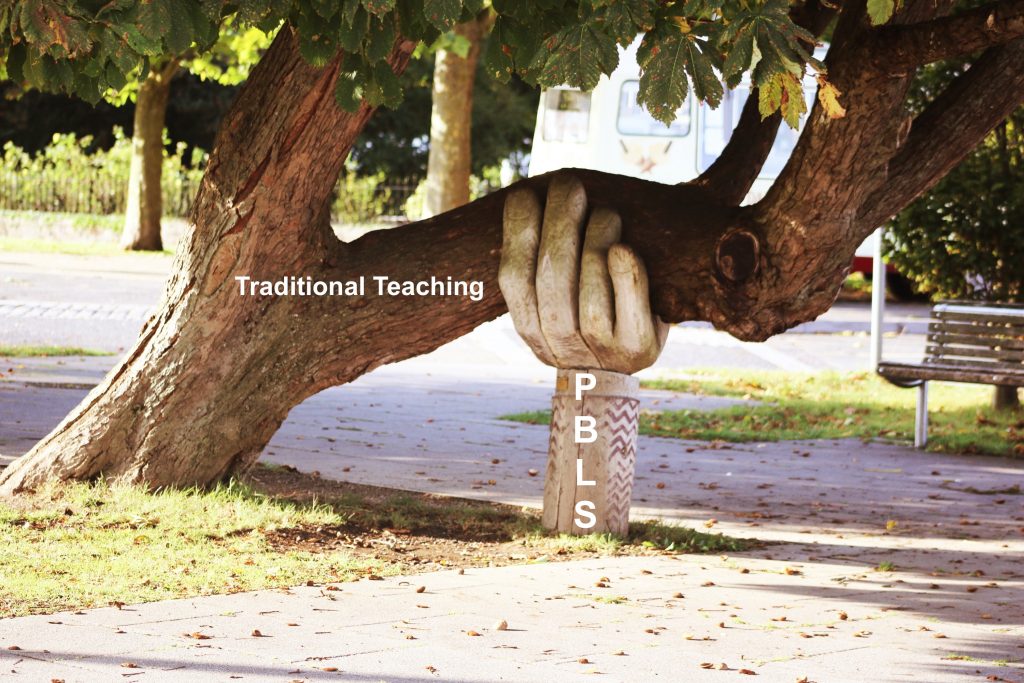
I have been in the education field, as a student and as an educator, for the past 24 years. For roughly the past 12 years, the concept of project based learning has been growing in popularity. I have experienced it as a student, and I have employed it in my classrooms. I have also largely taught in schools with traditional curriculum. I feel this puts me in a somewhat unique position to compare.
The standard opinion of project based learning, is that all learning being done in the class is encompassed by the project, and the curriculum is designed around it. For instance, during a unit on sustainable farming, the students learn math applicable to the project, science applicable to the project, social studies applicable to the project, writing applicable to the project, etc. So that by the end of the unit, students have planted a garden, tended it, harvested the produce, created a healthy meal, and presented the public with a nice meal and a presentation of what they learned. The project is the curriculum. This is a large over arching kind of project and it can be incredibly difficult to coordinate and plan. In a school where this kind of curriculum is the norm, it is easier to implement, as opposed to a school where traditional curriculum is the norm.
This article by the “Learning Center” has a good comparison of several different organizations that specialize in project based learning. They each have their own spin on what project based learning is, but they all pretty much agree on the following things;
- Projects are the curriculum
- Projects are authentic, involving real-world activities
- Projects involve collaboration
- Projects require problem solving
- Projects involve investigation and inquiry
- The process is student centered and student driven
- Students produce a realistic product
So how is PBLS different? What does PBLS do that none of those other organizations do? The answer lies in the “S” in PBLS. Most project based learning requires that all the above criteria are met in one project. PBLS, which stands for “Project Based Learning Supports”, fills the gap between traditional curriculum and PBL curriculum by supporting the traditional curriculum with project based learning activities. Where most PBL requires that all these criteria be met at once, PBLS provides ways to still meet these criteria in smaller supplemental tasks, and not necessarily all at once.
The Buck Institute, a leader in project based learning, has defined 7 principles of project based learning called their “Gold Standard”, which includes;
- Challenging problem or question
- Sustained Inquiry
- Authenticity
- Student Voice and Choice
- Reflection
- Critique and revision
- Public Product
If these principles are the goal of project based learning, and all that really matters is that students build knowledge by utilizing these principles, why must they all happen at once? We here at PBLS don’t believe it needs to be all encompassed into one project, and we are here to bridge the gap. Instead of a project based curriculum, which might not be feasible or practical to implement in your school, PBLS can help you pose challenging problems and questions to your students that requires them to use sustained inquiry to solve or answer. You can pose questions that target reflection, or ask students to critique and revise the answer to a problem. You can give thought provoking demonstrations, or simulate real-world scenarios in which students must use their knowledge. All of these things can be stand alone activities that supplement and support the curriculum, while still employing the principles of project based learning.
Basically, what PBLS does, the thing that makes us different, is that we encourage, support, and help educators implement project based learning principles into their classrooms in small incremental ways, rather than through large over arching projects.
Why is this a good thing?
- Educators who work in a school with very specific curriculum can still implement project based learning
- Educators who have a more traditional teaching style and are uncomfortable or unfamiliar with project based learning can start implementing it right away and gradually work up to more PBL in the curriculum if they’d like.
- It helps PBL to enter into more classrooms, and enables more students to experience it.
- It helps take some of the uncertainty out of how to incorporate PBL
- It fits PBL into the curriculum you already have, rather than requiring a whole new curriculum.
- It empowers educators to employ PBL and shows them where it fits in their teaching style
PBLS, Project Based Learning Supports, is the answer to the question often heard at professional development meetings, “How can I make this happen with what I am already doing?”
Project based learning is a powerful way to learn, and bringing these principles into more classrooms can only be a win for students and educators! Try the PBLS difference today!

